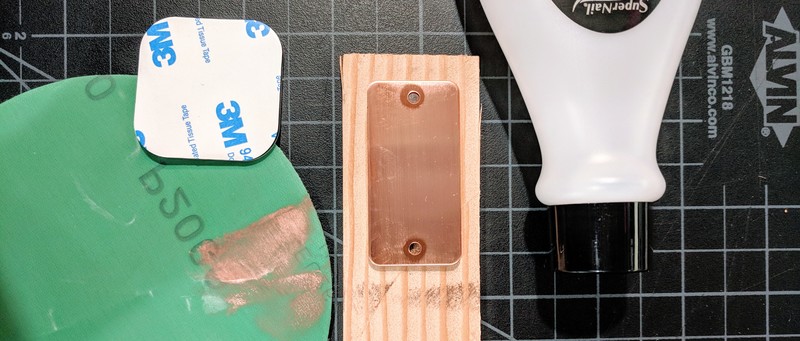
Hydrogen Sulfide Copper Pipe Method
This method, developed by Lionel Milberger, is a low-cost, accessible way to detect if hydrogen sulfide is present in the air. The elemental copper will react with hydrogen sulfide to produce a black-ish copper sulfide product, visible on the surface of the copper rod. This method has not been quantified or validated yet.
Design goals
As Lionel Milberger has written in an article in TEST Magazine, the goals of this method are to:
Be able to detect copper at health-relevant, non-fatal concentrations, from several parts per billion (ppb) up to 100 parts per million (ppm).
Be able to discern between copper oxides and copper sulfides forming on the surface of the copper rod.
Be able to measure hydrogen sulfide even under rainy or humid conditions where a significant fraction of hydrogen sulfide will dissolve in the water.
Be deployable, such that it does not require a person to be present for the duration of the test (like would be necessary with a hand-held probe).
Be low-cost and accessible to anyone.
Questions
This method has not yet been quantified or validated. Mr. Milberger has observed black deposits (likely copper sulfide) forming under conditions where it is likely that hydrogen sulfide is present (near an oil field by his Texas home), and a reddish deposit (likely copper oxide) under other conditions. The lower concentration limit of this method, below which no visible copper sulfide would form, are not yet known. The rates of reaction between the copper rod and atmospheric hydrogen sulfide also are not known, nor are the influence of humidity or rain, or the relative rate of copper oxide formation. Thus, the questions are:
What is the hydrogen sulfide concentration range that can be monitored using this method?
Is it possible to determine absolute hydrogen sulfide concentration, rather than a threshold presence/absence using this method?
What are the relative rates of copper sulfide formation and copper oxide formation under different environmental conditions and atmospheric concentrations?
Can the copper sulfide and copper oxide products be more precisely identified?
Other questions people have had when using this method include:
Activities
Activities people have designed using this method include:
| Purpose | Category | Status | Author | Time | Difficulty | Replications |
|---|---|---|---|---|---|---|
| Qualitative Time Lapse of Copper Corrosion | - | - | @ErikHanley11 | - | - | 0 replications: Try it » |
| Copper Strip Test Preparation Using Solvents | - | - | @ErikHanley11 | - | - | 0 replications: Try it » |
| Copper Sheet Hydrogen Sulfide Detection Activity | test-limits | draft | @gretchengehrke | 1h | easy | 2 replications: Try it » |
| Copper rod test for H2S | - | - | @Sharon Wilson | - | - | 0 replications: Try it » |
| Two Rounds of Copper Rod Test Making | - | - | @ErikHanley11 | - | - | 0 replications: Try it » |
Activities should include a materials list, costs and a step-by-step guide to construction with photos. Learn what makes a good activity here.
Research
See research related to this method here:
[tag:h2s-copper-pipe]